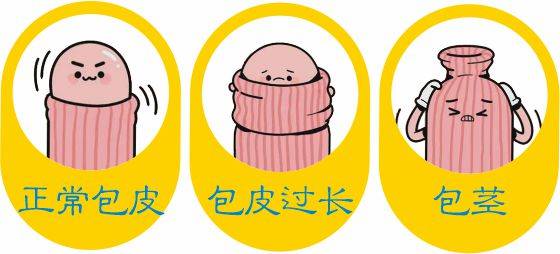Summer vacation is here, and performing circumcision on young boys seems to have become a popular procedure. Many parents may hesitate, whether to do it or not? Today, Dr. Ye, Director of Jing Shun Urology, will systematically introduce “All About Circumcision.”
1. Is the foreskin useful?
The foreskin refers to the layer of skin that wraps around the tip of the penis. It is a high-quality leather coat for the “little boy,” tailored closely, and has excellent elasticity.
① The foreskin contains a large number of touch receptors and is a sensitive sexual area;
② The foreskin protects the “little boy” from harm and maintains its softness, moisture, and good sensitivity;
③ The foreskin’s glands can secrete proteins that are resistant to bacteria and viruses, forming a line of defense for the body’s immune system.
2. What type does my child’s foreskin belong to?
There are three states of the foreskin.
① Normal foreskin: Perfect development, no intervention required;
② Long foreskin: If the foreskin completely covers the urethral orifice and the glans but can easily be pulled back to fully expose the glans, it is considered long foreskin;
③ Phimosis: The foreskin is not only long but also tightly constricts the glans, and even with manual manipulation, it cannot be pulled down, which is known as phimosis.
In simple terms, if it can be pulled back, it is long foreskin; if it cannot be pulled back, it is phimosis. Long foreskin is prone to accumulating smegma, leading to inflammation and urinary tract infections.
3. What are the hazards of phimosis?
① Difficulty urinating: Narrow foreskin opening causes slow or obstructed urine flow, making urination difficult or strenuous. This prolonged condition may affect bladder and kidney function;
② Susceptible to infections: Inadequate cleaning of smegma can lead to balanitis, urinary tract infections, etc.;
③ Susceptible to tumors: Prolonged irritation by smegma increases the risk of penile tumors;
④ Prone to “bird” incidents: In children with phimosis, when the foreskin is pulled back to expose the glans, the narrow foreskin opening may easily constrict around the “little boy,” leading to paraphimosis, causing vascular insufficiency and even necrosis of the glans.
4. Which foreskins need to be cut?
① True phimosis: Severe narrowing of the foreskin opening, in severe cases, may lead to scarred phimosis;
② Recurrent paraphimosis: After the foreskin is retracted, a tight ring is formed due to a narrow foreskin opening, tightly constricting the “little boy.” This situation requires immediate medical attention; improper handling can lead to necrosis of the “little boy”;
③ Long foreskin is difficult to clean, leading to recurrent balanoposthitis and urinary tract infections, etc.
5. When is the best time to have circumcision?
Age is not the key factor. Regardless of age, if there are indications for surgery, it can be performed. Of course, the cooperation level of children in different age groups varies. If there are no symptoms usually, it is generally recommended to wait until five or six years old before surgery domestically. Generally speaking, if a child simply has long foreskin that can be easily retracted, there is no urgency for surgery. In most cases, as development progresses, the issue of long foreskin can be resolved. After puberty, if there is still long foreskin or phimosis, local anesthesia for surgery is still an option.


